How Are Diamonds Made? Natural vs Lab-Created Explained
Two Paths, One Diamond Not all diamonds come from the same place — but they all start the same way. Pure carbon, crystalized under immense pressure and heat. Whether it…
This is the next article in the discussion of step cut diamonds.
The main goal of this article is to show how virtual facets form patterns in diamonds.
This is just a small part of the incredibly complex subject of virtual facets as virtual facets define every aspect of a diamond’s appearance and a large part of its performance.
This information applies to all polished diamonds but will be discussed in regards to step cuts.
Virtual facets are facets created by the interaction of the real facets that make it look and act like there are more facets on the diamond.
This wire-image view shows the actual facets of an asscher from the top view.
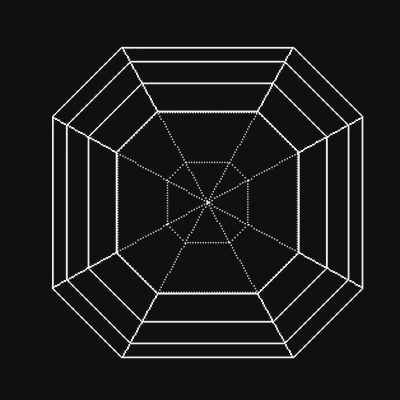
This wire-image shows actual facets in a side view.
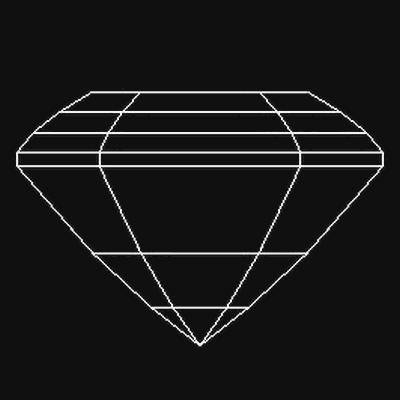
This wire-frame image shows the virtual facets inside the actual facets.
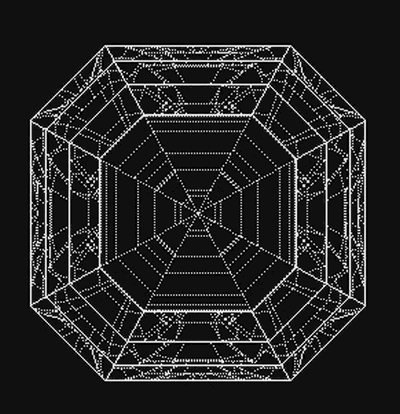
Notice how the virtual facets break up the outline of the actual facets into smaller areas.
The virtual facets are important for many reasons: The first of them is the formation of patterns as show below.
In this image, which is, the same virtual diamond as above, you will notice the diamond does not resemble the actual facet outline.
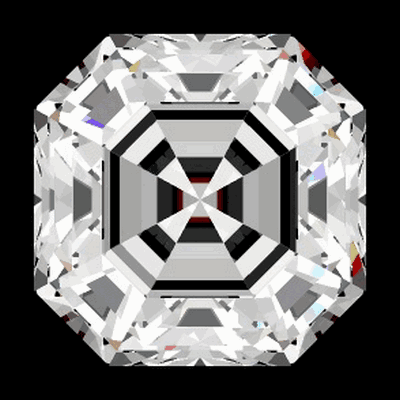
What it does look like is the virtual facets above; as the areas between the actual facets are split up.
The image below shows this with the virtual and actual facets outlined in red.
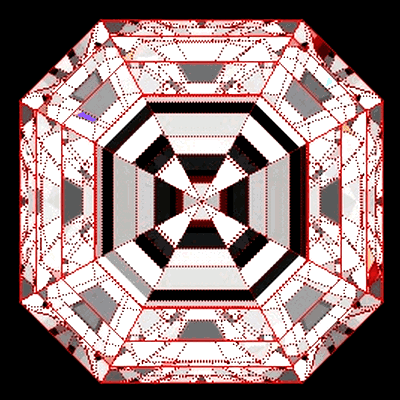
The virtual facets define the patterns visible in a diamond.
Virtual facets can react to light in 3 ways:
1: Returning light (including partial light return)
2: Leaking light
3: Showing obstruction of lighting by the observer
In the images below, which is the diamond under the ideal-scope and ASET with the virtual facets outlined, the virtual facets are:
A: Returning light
B: Leaking light
C: Showing obstruction of lighting by the observer (approximated by the scopes and shown in black in the Ideal-scope and blue in the ASET)
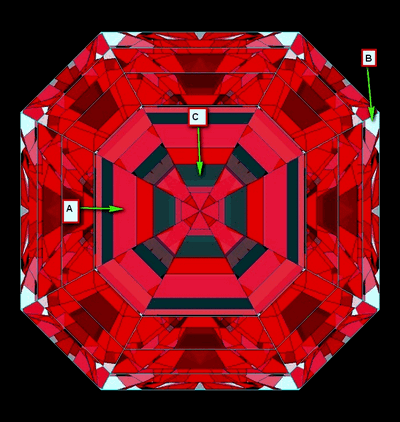
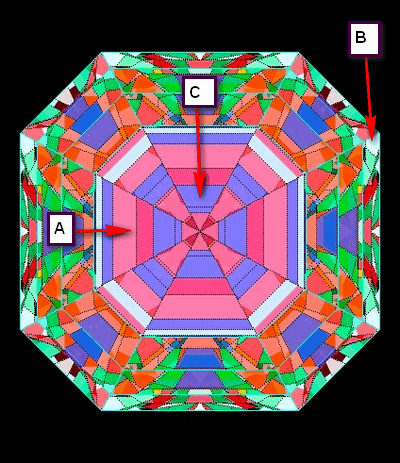
The following section have been removed 9/7/2008. They will presented at a later date.
– How do Virtual Facets react to tilt in step cut diamonds?
– How does the virtual facet size relate to the flash size a diamond produces?
– How does the virtual facet size relate to lighting?
Here is a quote from my portfolio which sums up my feelings: “Diamond design is painting with light. This is done by controlling the virtual facets by changing the actual facets to make the diamond look the way I want it to look. Virtual facets can react in three ways, they can return light, they can leak light, or they can react to obstruction. Controlling the size, shape, location and how virtual facets react under different lighting conditions and viewing distances is the key to diamond design.”
Final Notes
When writing this article I did my best to make it easy to understand and technically correct. My goal is to arm the reader with the knowledge needed to understand my next article. When given a choice between a full technical explanation and easy-to-understand I chose easy-to-understand. I would like to thank those who helped edit and or contributed to this article:
Garry Holloway
John Pollard
Neil Beaty
DiaGem
Jonathan Weingarten
Marty Haske
Thank you for reading my article and a huge thank you to Andrey for allowing me the opportunity to share this with you.
Karl
Discuss here https://www.pricescope.com/forum/viewtopic.php?f=54&t=94015